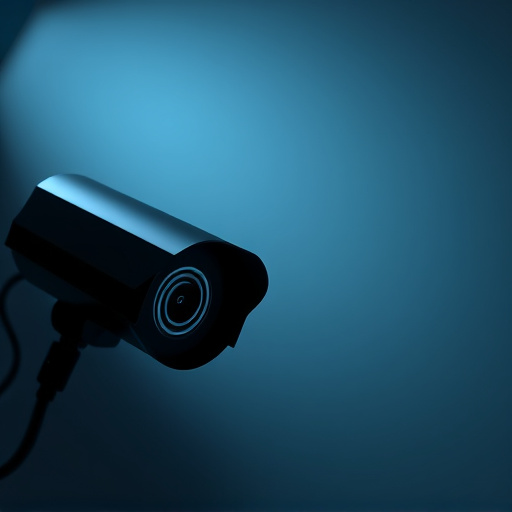Spy earpieces, now equipped with advanced spy camera and microphone technology, have transformed covert surveillance. These miniaturized devices can be concealed in everyday items like earrings or pens, offering discretion for surveillance, security, and privacy monitoring. Utilizing wireless protocols for real-time data transmission, they provide powerful tools for law enforcement, private investigations, and corporate security to protect sensitive information in the digital age, but also raise legal and ethical considerations regarding individual privacy.
Uncover the intriguing world of spy earpieces, where technology meets secrecy. This comprehensive guide explores the fascinating evolution of hidden surveillance devices, from their advanced capabilities to diverse applications. We delve into the different types, including sophisticated spy cameras and microphones, that blend seamlessly into everyday objects. Balancing legal and ethical boundaries, this article navigates the grey areas surrounding these devices, offering insights for both curious minds and those seeking protection in a world of growing privacy concerns.
Understanding Spy Earpiece Technology: A Comprehensive Overview
Spy earpieces, also known as covert listening devices, have evolved significantly over time, transforming from bulky and unreliable equipment to sophisticated, almost invisible technology. At their core, these devices combine two essential components: a spy camera and microphone. The camera, often miniature and high-resolution, captures visual data while the microphone facilitates audio recording, both discreetly and remotely.
The technology behind these devices leverages advanced miniaturization, allowing for compact designs that can be easily concealed within everyday objects like earrings, pens, or buttons. This concealment is a cornerstone of their effectiveness, making them ideal for surveillance, security, and even personal use in scenarios where discretion is paramount. Internally, spy earpieces utilize wireless transmission protocols, such as Bluetooth or radio frequency (RF), to transmit data from the hidden camera and microphone to a receiving device or app, ensuring real-time monitoring and recording capabilities.
Types of Spy Devices: Cameras and Microphones Unveiled
In the realm of covert surveillance, spy devices play a pivotal role in capturing unseen moments and gathering intimate information. Among these, spy cameras and microphones stand out as indispensable tools for those seeking discretion and privacy. Spy cameras, often disguised as everyday objects like pens, watches, or even light bulbs, offer a discrete way to record videos without raising suspicion. These devices are particularly useful for investigators, security personnel, and individuals looking to monitor their surroundings from afar.
Microphones, on the other hand, provide the capability to capture audio covertly. Similar to spy cameras, these microphones can be embedded in seemingly innocuous items like keychains, lapel pins, or even decorative objects. Their ability to pick up whispers and conversations from a distance makes them invaluable for surveillance operations, making it possible to gather sensitive information without the subject’s knowledge. Together, spy cameras and microphones form a formidable duo, enabling users to navigate the labyrinthine world of discreet observation with enhanced precision and effectiveness.
Legal and Ethical Considerations: Navigating the Grey Areas
The use of spy cameras and microphones, often concealed within seemingly innocuous items like watches or pens, raises significant legal and ethical questions. In many jurisdictions, surveillance equipment must comply with privacy laws, which dictate its permissible uses and require explicit consent from individuals being monitored. However, the grey areas emerge when these devices are employed for lawful purposes, such as in law enforcement or private detective work, versus their misuse by criminals or rogue entities seeking to invade privacy illegally.
Ethical considerations further complicate the matter. While advocates argue that these tools can serve as powerful aids in fighting crime and ensuring public safety, critics worry about potential abuses of power, violations of civil liberties, and the impact on privacy rights. The challenge lies in establishing a balance where technology serves justice without infringing upon individual freedoms. This delicate navigation requires robust legal frameworks and societal discourse to ensure that the benefits are realized while mitigating the risks associated with spy cameras and microphones.
Applications and Use Cases: From Privacy to Industrial Espionage
Spy earpieces, equipped with advanced spy cameras and microphones, have a wide array of applications spanning from personal privacy to industrial espionage. In today’s digital age, individuals seek ways to protect their sensitive information, leading to an increased demand for these discrete devices. Whether it’s a concerned parent monitoring their child’s activities or a business owner ensuring the safety of confidential discussions, spy earpieces offer a silent yet powerful tool for surveillance.
On the other hand, industrial espionage poses a significant threat in the corporate world. Companies use spy cameras and microphones hidden within seemingly innocuous objects to gather competitive intelligence, protect intellectual property, and prevent trade secret leaks. This technology enables them to discreetly monitor high-value assets, meetings, and interactions, ensuring their business advantages remain secure.
